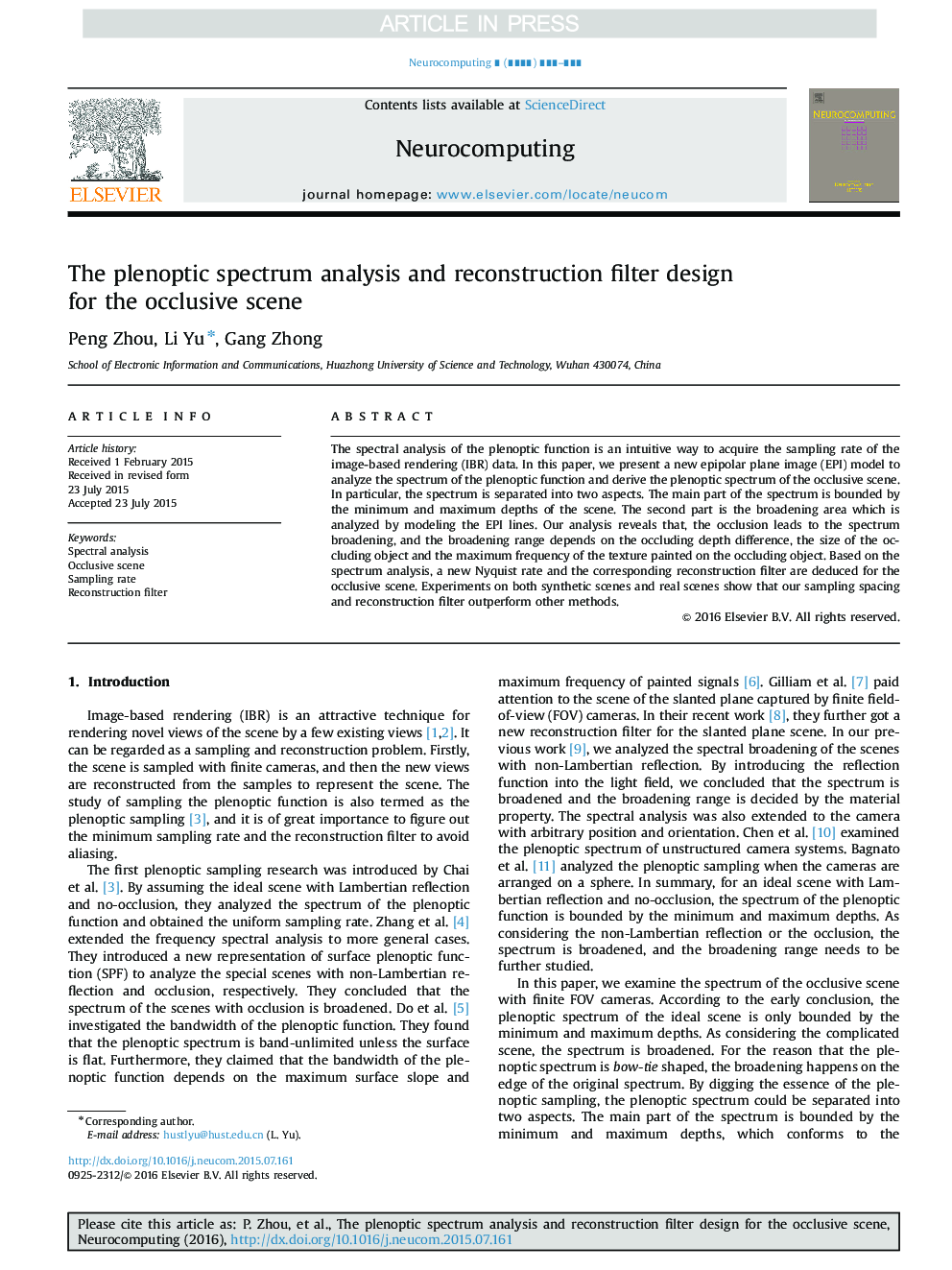| Article ID | Journal | Published Year | Pages | File Type |
|---|---|---|---|---|
| 4948188 | Neurocomputing | 2016 | 10 Pages |
Abstract
The spectral analysis of the plenoptic function is an intuitive way to acquire the sampling rate of the image-based rendering (IBR) data. In this paper, we present a new epipolar plane image (EPI) model to analyze the spectrum of the plenoptic function and derive the plenoptic spectrum of the occlusive scene. In particular, the spectrum is separated into two aspects. The main part of the spectrum is bounded by the minimum and maximum depths of the scene. The second part is the broadening area which is analyzed by modeling the EPI lines. Our analysis reveals that, the occlusion leads to the spectrum broadening, and the broadening range depends on the occluding depth difference, the size of the occluding object and the maximum frequency of the texture painted on the occluding object. Based on the spectrum analysis, a new Nyquist rate and the corresponding reconstruction filter are deduced for the occlusive scene. Experiments on both synthetic scenes and real scenes show that our sampling spacing and reconstruction filter outperform other methods.
Keywords
Related Topics
Physical Sciences and Engineering
Computer Science
Artificial Intelligence
Authors
Peng Zhou, Li Yu, Gang Zhong,
